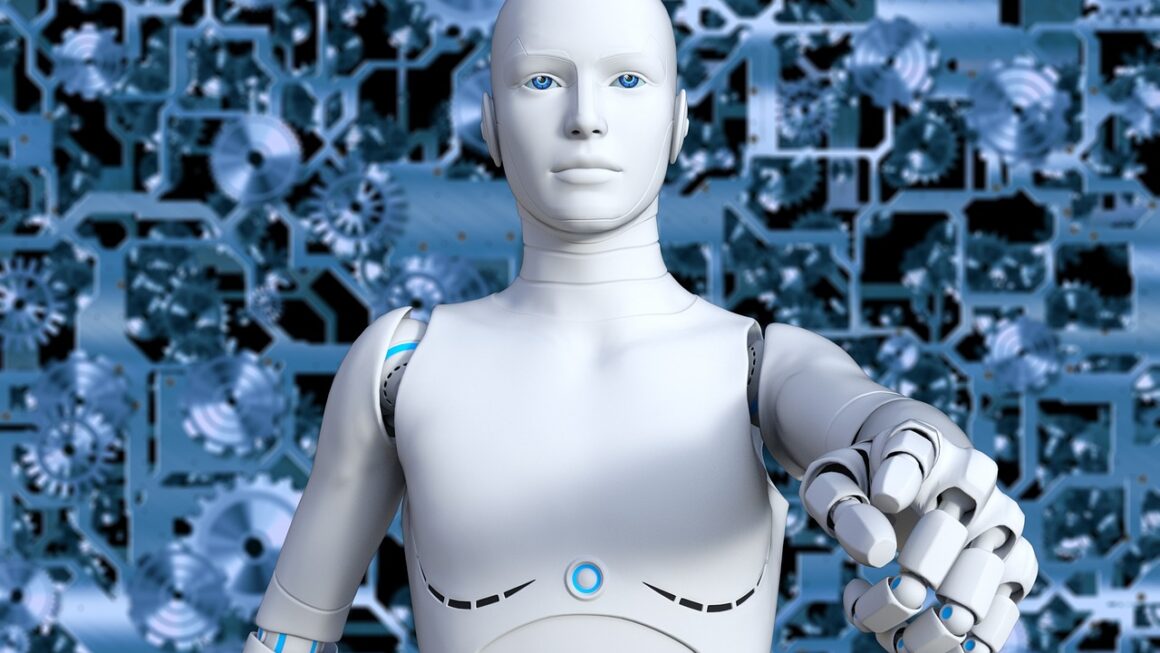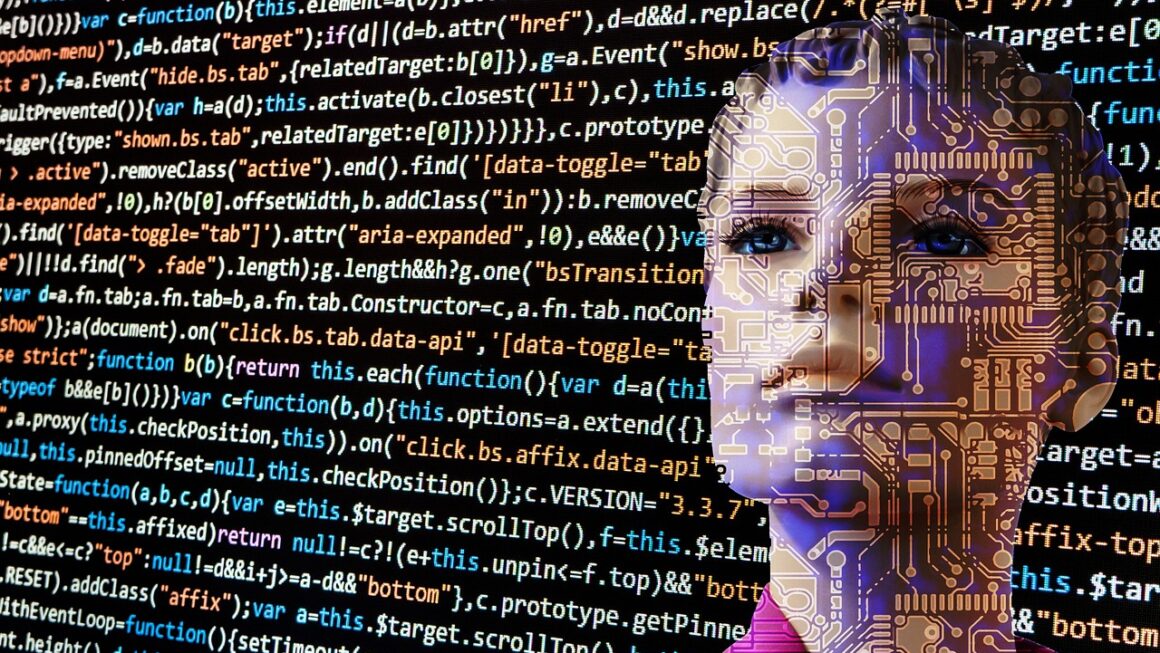Neural networks, once a futuristic concept, are now at the forefront of artificial intelligence, driving innovations in everything from image recognition to natural language processing. They are complex yet elegant systems inspired by the human brain, capable of learning intricate patterns and making intelligent decisions. Whether you’re a seasoned data scientist or a curious beginner, understanding the fundamentals of neural networks is essential for navigating the rapidly evolving landscape of AI.
What are Neural Networks?
Neural networks are a set of algorithms, modeled loosely after the human brain, that are designed to recognize patterns. They interpret sensory data through a kind of machine perception, labeling or clustering raw input. The patterns they recognize are numerical, contained in vectors, into which all real-world data, be it images, sound, text or time series, must be translated.
Biological Inspiration
Neural networks draw inspiration from the biological structure of the human brain. Just like the brain consists of interconnected neurons, artificial neural networks are composed of artificial neurons (also called nodes) organized in layers. These layers are interconnected and process information in a way that mimics biological neural networks.
The Basic Structure
A typical neural network consists of three main types of layers:
- Input Layer: This layer receives the initial data or features. For example, in an image recognition task, the input layer might represent the pixel values of an image.
- Hidden Layers: These layers are located between the input and output layers and perform complex computations on the input data. A neural network can have multiple hidden layers, allowing it to learn intricate patterns.
- Output Layer: This layer produces the final result or prediction. For instance, in an image classification task, the output layer might indicate the probability of the image belonging to different categories (e.g., cat, dog, bird).
Each connection between neurons has a weight associated with it. These weights are adjusted during the learning process to improve the accuracy of the network’s predictions.
How Neural Networks Learn
Neural networks learn through a process called training. During training, the network is fed with labeled data (i.e., data with known correct outputs) and adjusts its weights to minimize the difference between its predictions and the true labels. This process involves:
- Forward Propagation: Input data is passed through the network, layer by layer, to produce a prediction.
- Loss Function: A loss function measures the difference between the network’s prediction and the true label. This quantifies how “wrong” the network’s prediction is.
- Backpropagation: The error signal (the derivative of the loss function) is propagated back through the network to adjust the weights of the connections. This adjustment aims to reduce the error in future predictions.
- Optimization: An optimization algorithm (e.g., gradient descent) is used to update the weights in a way that minimizes the loss function.
This iterative process continues until the network achieves a satisfactory level of accuracy on the training data. It’s crucial to also test the network on separate, unseen data (a validation set) to ensure it generalizes well and avoids overfitting.
Key Components of Neural Networks
Understanding the core components of neural networks is crucial for building and optimizing these models.
Activation Functions
Activation functions introduce non-linearity into the network, allowing it to learn complex relationships in the data. Without activation functions, the neural network would simply be a linear regression model, severely limiting its ability to solve complex problems.
- Sigmoid: Outputs a value between 0 and 1, making it suitable for binary classification problems. However, it suffers from the vanishing gradient problem.
- ReLU (Rectified Linear Unit): Outputs the input directly if it is positive, otherwise, it outputs zero. It’s computationally efficient and widely used, but can suffer from the “dying ReLU” problem.
- Tanh (Hyperbolic Tangent): Outputs a value between -1 and 1, often used in hidden layers.
- Softmax: Converts a vector of numbers into a probability distribution, making it ideal for multi-class classification problems. The sum of the probabilities equals 1.
Choosing the right activation function depends on the specific problem and network architecture.
Loss Functions
A loss function, also known as a cost function, quantifies the difference between the network’s predictions and the true labels. The goal of training is to minimize this loss.
- Mean Squared Error (MSE): Commonly used for regression problems, it calculates the average squared difference between the predicted and actual values.
- Cross-Entropy Loss: Primarily used for classification problems, it measures the dissimilarity between the predicted probability distribution and the true distribution. Binary cross-entropy is used for binary classification, while categorical cross-entropy is used for multi-class classification.
- Hinge Loss: Used for “maximum-margin” classification, such as support vector machines.
Optimization Algorithms
Optimization algorithms are used to update the weights of the network during training to minimize the loss function.
- Gradient Descent: A fundamental optimization algorithm that iteratively adjusts the weights in the direction of the steepest descent of the loss function.
- Stochastic Gradient Descent (SGD): Updates the weights based on the gradient computed on a single training example or a small batch of examples, rather than the entire dataset. This can lead to faster convergence but also more noisy updates.
- Adam (Adaptive Moment Estimation): An adaptive optimization algorithm that combines the benefits of both Momentum and RMSProp. It’s widely used and often performs well in practice.
- RMSprop (Root Mean Square Propagation): An adaptive learning rate method that addresses the diminishing learning rates problem.
Hyperparameters
These are parameters whose values are set prior to the commencement of the learning process. These include:
- Learning rate: Defines the step size during the weight updates.
- Batch size: The number of training examples used in one iteration.
- Number of layers: Number of hidden layers in the network.
- Number of neurons per layer: Number of neurons in each hidden layer.
- Regularization parameters: Used to prevent overfitting.
Types of Neural Networks
Different types of neural networks are designed for specific tasks and data types.
Feedforward Neural Networks (FFNNs)
- The simplest type of neural network, where information flows in one direction, from the input layer to the output layer.
- Suitable for tasks such as classification and regression.
- Example: A feedforward network can be used to predict house prices based on features like size, location, and number of bedrooms.
Convolutional Neural Networks (CNNs)
- Designed for processing grid-like data, such as images and videos.
- Utilize convolutional layers to automatically learn spatial hierarchies of features.
- Example: CNNs are widely used in image recognition tasks, such as identifying objects in images or classifying images based on their content. They are also used in medical imaging to detect abnormalities.
- Key components: Convolutional layers, pooling layers, and fully connected layers.
Recurrent Neural Networks (RNNs)
- Designed for processing sequential data, such as text and time series.
- Have feedback connections, allowing them to maintain a memory of past inputs.
- Example: RNNs are used in natural language processing tasks, such as machine translation, text generation, and sentiment analysis. They are also used in time series forecasting, such as predicting stock prices.
- Variants: Long Short-Term Memory (LSTM) and Gated Recurrent Unit (GRU) networks address the vanishing gradient problem in standard RNNs.
Generative Adversarial Networks (GANs)
- Consist of two networks: a generator and a discriminator.
- The generator tries to create realistic data samples, while the discriminator tries to distinguish between real and generated samples.
- Example: GANs can be used to generate realistic images, videos, and audio. They are also used in data augmentation and style transfer.
Practical Applications of Neural Networks
Neural networks have revolutionized various fields with their ability to solve complex problems.
Image Recognition and Computer Vision
- Object Detection: Identifying and locating objects in images or videos. Example: Self-driving cars use object detection to identify pedestrians, vehicles, and traffic signs.
- Image Classification: Categorizing images based on their content. Example: Identifying different types of flowers in images.
- Image Segmentation: Dividing an image into different regions or segments. Example: Medical imaging to segment tumors from healthy tissue.
- Face Recognition: Identifying individuals based on their facial features. Example: Security systems that use face recognition for access control.
Natural Language Processing (NLP)
- Machine Translation: Translating text from one language to another. Example: Google Translate uses neural networks to translate text between hundreds of languages.
- Sentiment Analysis: Determining the sentiment or emotion expressed in a piece of text. Example: Analyzing customer reviews to identify positive and negative feedback.
- Text Generation: Generating new text based on a given prompt or context. Example: Creating chatbots that can generate human-like responses.
- Named Entity Recognition (NER): Identifying and classifying named entities in text, such as people, organizations, and locations.
Healthcare
- Disease Diagnosis: Assisting doctors in diagnosing diseases based on medical images, patient data, and other information. Studies show that neural networks can achieve accuracy rates comparable to or even exceeding those of human experts in certain diagnostic tasks.
- Drug Discovery: Identifying potential drug candidates and predicting their effectiveness.
- Personalized Medicine: Tailoring treatment plans to individual patients based on their genetic makeup, lifestyle, and other factors.
- Predictive Healthcare: Anticipating and preventing health issues before they arise. For example, predicting the likelihood of a patient developing a certain disease based on their medical history and risk factors.
Finance
- Fraud Detection: Identifying fraudulent transactions and activities.
- Algorithmic Trading: Developing automated trading strategies based on market data and other information.
- Credit Risk Assessment: Evaluating the creditworthiness of borrowers.
- Financial Forecasting: Predicting future market trends and economic indicators.
Conclusion
Neural networks have rapidly evolved from theoretical models to powerful tools that are transforming various industries. By understanding their fundamental concepts, architectures, and applications, you can unlock their potential and contribute to the next wave of AI innovation. From enhancing image recognition and natural language processing to revolutionizing healthcare and finance, neural networks offer endless possibilities for solving complex problems and improving our lives. As the field continues to advance, staying informed and experimenting with different neural network techniques will be crucial for staying ahead in the exciting world of artificial intelligence.




